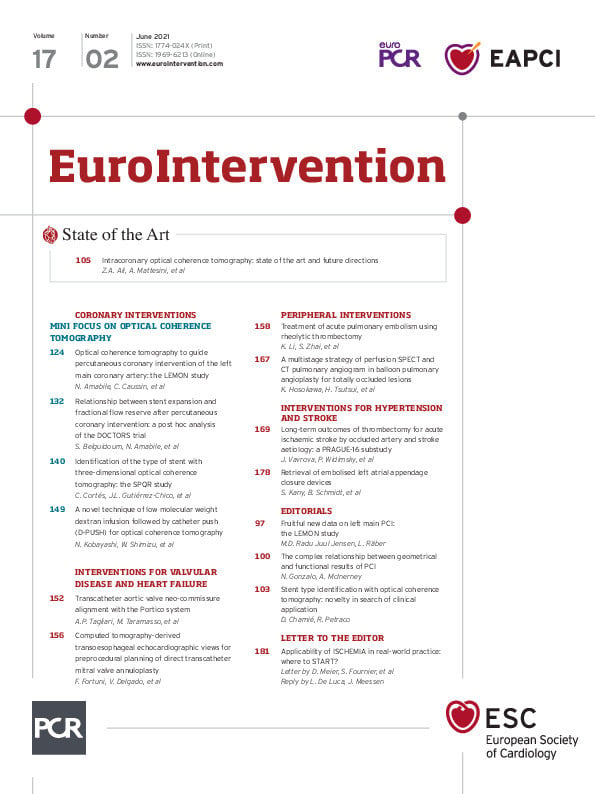We thank Meier and colleagues1 for their valuable comments on our manuscript assessing the external applicability of the ISCHEMIA (International Study of Comparative Health Effectiveness with Medical and Invasive Approaches) trial2 in a cohort of 5,070 consecutive patients with stable coronary artery disease (SCAD) enrolled in the START (STable Coronary Artery Diseases RegisTry) registry3. First of all, they questioned why we also included in our analysis patients with a recent episode of acute coronary syndrome (ACS). In the 2013 European Society of Cardiology (ESC) guidelines, the definition of SCAD also included the stabilised, often asymptomatic, phases that immediately follow an ACS episode4. This continuum of the transition from ACS to SCAD has also been noted by the updated 2019 ESC guidelines on the management of chronic coronary syndromes (CCS) which include asymptomatic and symptomatic patients with stabilised symptoms <1 year after an ACS among the clinical scenarios of CCS5. For these reasons, we considered an episode of ACS occurring >30 days from the index event, regardless of the documentation of inducible myocardial ischaemia or the presence of anginal symptoms, as one of the entry criteria for the START registry6.
For the purpose of our analysis, it is important to underline that patients with an ACS within the previous 2 months were excluded from the ISCHEMIA trial2. Nevertheless, the median time from ACS to enrolment in the ISCHEMIA-Like group of our analysis was 6 (IQR 3-11) months and none presented an ACS episode <2 months from the index event, confirming the similarity of our selected cohort to the ISCHEMIA trial population. Among our ISCHEMIA-Like patients, a prior ACS was an entry criterion for 53.4% of patients, while a stable angina was present, as the only qualifying criterion for enrolment, in 48.1% of cases. Therefore, at least half of our ISCHEMIA-Like population presented with typical anginal symptoms at enrolment. Accordingly, in the ISCHEMIA trial, an episode of angina within the first three months from randomisation was present in 42% of the overall population2.
Meier et al also complained about the lack of an analysis comparing the clinical outcomes of patients who received revascularisation versus those who received optimal medical therapy in our real-world registry. However, the purpose of our analysis was not to replicate a trial’s results comparing the events between two strategies, but rather we aimed to evaluate the external applicability and eligibility for ISCHEMIA in a real-world context. As expected, we found marked differences in clinical outcome between our patients ideally eligible for randomisation and those included in ISCHEMIA who received a pre-specified optimal management, underlining the difference between the data deriving from an observational study and the irreplaceable evidence of a pivotal randomised trial, such as the ISCHEMIA trial2.
Conflict of interest statement
The authors have no conflicts of interest to declare.
Supplementary data
To read the full content of this article, please download the PDF.

